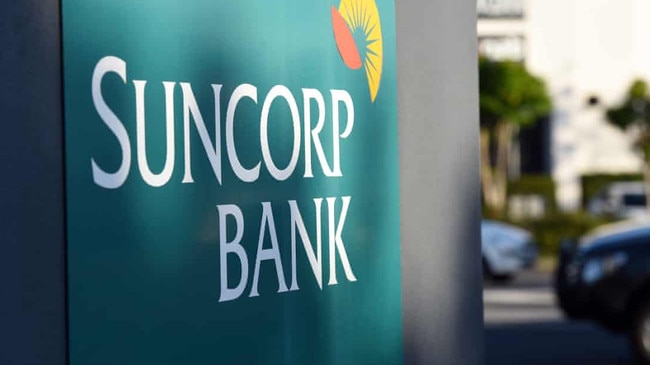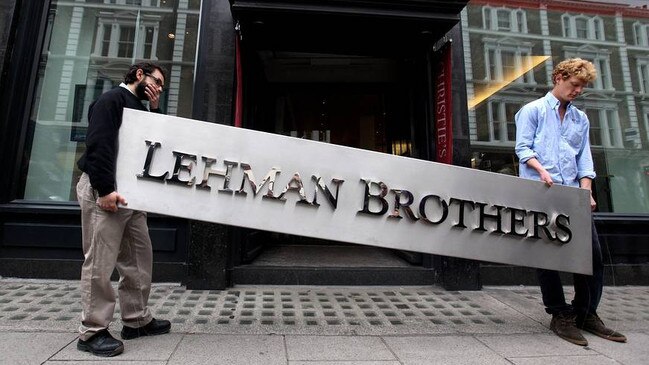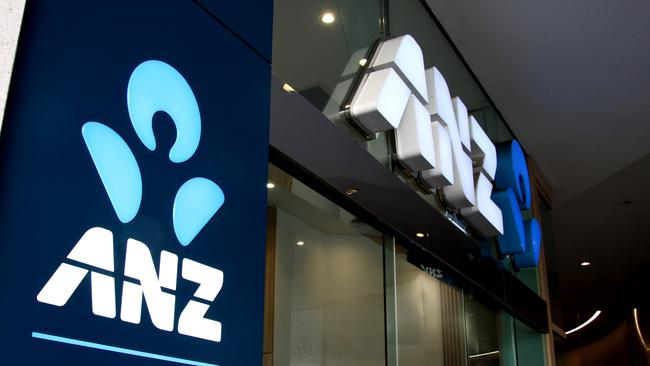ANZ’s second run at Suncorp’s bank comes a decade late
In moving on one of the last available bite-sized properties in Australian banking, ANZ chief executive Shayne Elliott is paying up to stand still.

In moving on one of the last available bite-sized properties in Australian banking, ANZ chief executive Shayne Elliott is paying up to stand still.
The planned $4.9bn buyout of Suncorp’s banking arm sees ANZ finally boosting its underweight position in Queensland and NSW, as well as regaining a slender lead over NAB on housing loans. But it remains cemented at fourth spot when it comes to small and mid-sized business lending as well as deposits.
However, Elliott’s deal will test investor appetite for a banking acquisition as ANZ plans to fund it through a capital raising just as rival banks are sending surplus capital back to shareholders in the form of buybacks and higher dividends.
From Westpac’s move on St George to Bendigo merging with Adelaide, and ANZ’s own experience in New Zealand, Australian banks have a notoriously poor track record when it comes to integrating banking mergers.

Differences in technology are often the biggest stumbling point, while customers often get left behind in the consolidation of brands and branches.
ANZ is already attempting to play catch-up to its bigger rivals in technology at a critical point in the cycle, and it is still recovering from loss of market share early in the Covid-19 borrowing rush, which raises the question of whether it has the capacity to push ahead with a complex merger. Elliott has also staked the final years of his tenure as CEO on getting the tech settings right as a way to pursue market growth.
It’s the second time around for ANZ, which in the weeks that followed the Lehman Brothers collapse in the 2008 global financial crisis made an opportunistic move to buy Suncorp’s dangerously-wounded banking arm.
NAB was another potential suitor, but ANZ’s then Australian boss Brian Hartzer was meeting with Suncorp’s board on October 11 – a Saturday – when a day later the Rudd government introduced a blanket deposit guarantee scheme.
That program to protect nearly every retail deposit sitting in the nation’s banks was in response to other schemes being introduced around the world, but it and funding support gave a massive boost to Suncorp as it stemmed the need to push ahead with a banking fire sale. It also meant that Hartzer was sent back to Melbourne empty-handed.
Uneasy marriage
For Suncorp’s chief executive Steve Johnston, the sale is set to bring to an end the 25-year uneasy marriage between a bank and insurer under the one roof.
It was more state pride than financial modelling that saw the then Queensland government rapidly cobble together the state-backed insurer Suncorp, the regional bank (Metway) and the lending and development arm Queensland Industry Development Corporation.

Queensland’s politicians tend to like their money staying at home and so the three-way merger promised to create a Sunshine State corporate champion as well as a new financial force aimed at challenging the big southern banks.
It was a strategic mess from the start and the reality rarely matched the ambition.
Financial shock
In the following decade it was the opportunistic buyout of NSW’s beaten-up GIO insurance and then the 2006 ASX takeover of AAMI insurance-owner Promina that propelled Suncorp into the big league of insurance.
Ironically it was the higher share multiples that overbought banks were trading on at the time that allowed Suncorp to partly fund the $7.3bn Promina mega-deal.
However the massive insurance integration quickly saw the ever capital-hungry banking arm take a back seat. In the lead-up to the global financial crisis, the bank was generating a third of Suncorp’s earnings but was soaking up a majority of the capital. And while the prize was insurance, it was the troubled banking arm that almost caused Suncorp to collapse.
When the GFC hit, Suncorp’s small balance sheet simply couldn’t handle the savage losses it had racked up from its rampant lending to business, especially to high-flying Gold Coast property developers. At the same time, funding markets had frozen over and it was massively short on deposits.

Following the collapse of Lehman Brothers, Suncorp was badly teetering and faced a near-death experience as it came close to running out of money. It was the Federal government banking deposit guarantee (put in place by Queenslanders Prime Minister Kevin Rudd and Treasurer Wayne Swan) in October 2008 that ultimately saved it.
Suncorp, which at the time was advised by the Paul Keating-chaired Lazard, ultimately turned its back on ANZ as it steered through an emergency capital raising but a new executive team then spent years to extracting the bank from bad loans.
From that point Suncorp’s bank was always going to be the poorer sibling to the much bigger insurance arm, and the riding instructions were to operate the lender on a highly conservative footing.
At the end of 2007 Suncorp had a loans book of $45.7bn, around half of that – $21bn – was against high-risk business lending. To show how deeply the scars of the GFC run, Suncorp’s lending book today is dominated by $46bn of low-risk housing loans, against just $11bn of business loans.
‘One-stop shop’
Entering the 2020s, Suncorp remained a financial oddity. It is one of the last holdouts in a world where bancassurance models have been rapidly unwound.
This brings to an end a financial trend that nearly two decades ago regarded the bank as the one-stop financial services shop and spurred on billions of dollars in deals as banks here and around the world chased wealth managers and insurers.
The thinking at the time was that product was king, which spurred on a push to own manufacturing and the distribution of financial products ranging from insurance, financial advice and banking.

Few companies, including Suncorp, could crack the secret code of cross-selling financial products. Indeed many of those products were in conflict with each other such as selling a deposit compared to an investment and even more often were not in the best interests of the customer. The Hayne financial services royal commission later shone a spotlight on just how damaging to customers some sales could be. Its findings accelerated a move already underway among banks to exit their non-banking products.
From the perspective of investors, Suncorp shares have long traded at a sizeable discount to its pure-play insurance rival IAG even though they operate very similar insurance businesses. Investors see the capital demands of a small bank acting as a drag. At the same time the bank has never been able to reach its full potential given the management focus needed on running a highly-complex insurance business.
Those close to the Suncorp board say there has long been “mixed view” as to what to do with the bank. Steve Johnston, the former chief financial who was appointed to the top job in 2019, has long held the view that separation was the best way to create value for Suncorp.
Simplify, simplify
Starting with the rescue mission of then chief executive Patrick Snowball following the global financial crisis, Suncorp’s management have “simplification” burned into their strategy templates. Michael Cameron, a former CBA banker continued this and now Johnston, a communications and business specialist who cut his teeth working as an adviser to Queensland Premier Rob Borbidge, has fully embraced it.
In recent years this has seen the $725m sale of Suncorp’s Australian life business and then the later sale of the wealth management business. It has also exited holdings in panel beating and auto parts businesses as well as an insurance joint venture in Tasmania.
While a sale of the bank, which still generates a third of earnings, draws a line under Queensland’s bid for financial domination, it becomes a cleaner outcome for investors where higher investment returns can be expected from holding on to a pure-play insurer.
johnstone@theaustralian.com.au




To join the conversation, please log in. Don't have an account? Register
Join the conversation, you are commenting as Logout